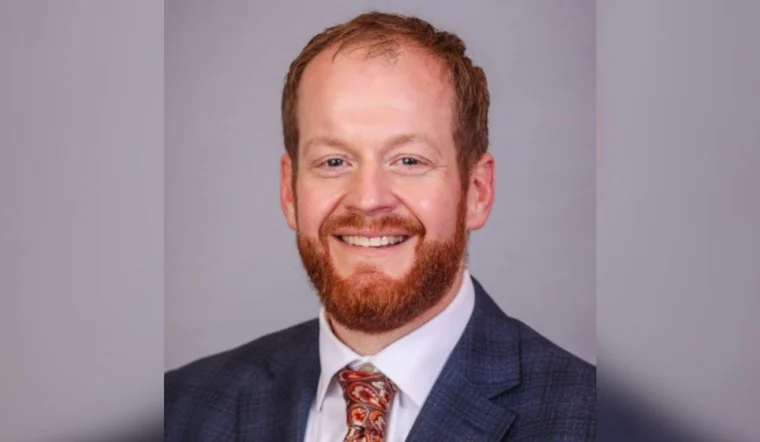V.J.’s Law: Ohio’s Pivotal Move Toward Stronger Child Abuse Reporting and Prevention

In Ohio, the devastating story of a four-and-a-half-month-old baby, known only as “V.J.,” has become the driving force behind a proposed legislative overhaul of the state’s child protection and mandatory reporting system. The introduction of House Bill 346, now widely referred to as V.J.’s Law marks a sobering turning point in how the state confronts child abuse and interagency accountability.
Championed by State Representative Matthew Kishman (R-Minerva) and Representative Josh Williams (Sylvania Twp.), the bill is a direct response to the systemic failures that allowed V.J.’s suffering to go unaddressed, despite warning signs and professional involvement. If passed, V.J.’s Law promises to close critical gaps, enforce urgency, and reshape how child abuse is identified, reported, and acted upon in Ohio.
The Heartbreaking Catalyst: Who Was V.J.?
While details about V.J.’s identity remain private out of respect for the family and legal boundaries, what is known is harrowing. The infant endured severe abuse, with multiple interactions with professionals who failed to escalate or adequately report the harm.
This tragic case exposed dangerous deficiencies in Ohio’s child welfare procedures, particularly in how and when professionals report suspected abuse and how quickly agencies like Children Services and law enforcement respond and communicate with each other.
What V.J.’s Law Will Change
House Bill 346 seeks to modernize and tighten the child abuse reporting system across the state with several powerful measures:
1. Immediate, Dual Reporting Mandate
Under current Ohio law, mandatory reporters (such as doctors, teachers, and social workers) are often expected to report suspicions of abuse to Children Services. However, law enforcement may not be alerted unless the agency decides to escalate.
V.J.’s Law would require immediate notification to both Children Services and law enforcement, a dual-reporting standard ensuring parallel awareness, investigation, and collaboration.
2. Accelerated Communication Timeline
Today, Children Services has up to seven days to notify law enforcement of abuse cases. HB 346 cuts this delay to just 48 hours, recognizing the vital need for rapid response in protecting vulnerable children.
This change is especially crucial in cases where signs of abuse are time-sensitive, and delays could mean repeated harm or worse.
3. Mandatory Medical Record Sharing
The bill also includes a provision to grant both agencies access to medical examination reports related to suspected abuse. In many past cases, including V.J.’s, lack of access to clinical findings slowed or obstructed appropriate interventions.
Under V.J.’s Law, such records would be automatically shared, giving investigators clearer evidence for decision-making and potentially expediting protective action.
Why This Matters: A System Under Scrutiny
V.J.’s Law is not just about one case. It shines a spotlight on larger, structural flaws:
-
Delayed action due to bureaucratic hurdles
-
Fragmented communication between law enforcement, healthcare providers, and child protection agencies
-
Lack of urgency in existing protocols, which can allow abusers to continue harming children even after red flags have been raised
In Ohio and beyond, these gaps are not uncommon. While mandatory reporting laws exist in all 50 U.S. states, how and when reports are made and how quickly agencies act can vary widely.
Advocates argue that V.J.’s Law could serve as a national model for tightening procedural timelines and improving transparency between key players in child welfare.
The Broader National Context
According to data from the U.S. Department of Health and Human Services:
-
Over 600,000 children are victims of abuse or neglect in the U.S. annually.
-
76% of child fatalities involve children under the age of 3.
-
In many fatal cases, abuse was previously reported but not acted on effectively.
Ohio’s legislative response reflects a growing call across the nation for more accountability, clearer guidelines, and stronger enforcement tools in the fight against child maltreatment.
The Path Ahead
V.J.’s Law is currently being reviewed by the Ohio House Public Safety Committee. Supporters are optimistic, but the road to passage involves public hearings, advocacy, and potentially partisan negotiations.
If enacted, the law could set a precedent for:
-
Universal mandatory dual reporting
-
Shortened communication timelines
-
Transparent, inter-agency access to medical data
-
Stronger deterrents and accountability for non-reporting
Beyond policy, V.J.’s Law represents a moral imperative: that children should not be lost in the shuffle of adult systems, and that every opportunity to intervene must be seized without hesitation.
What Parents, Professionals, and Communities Can Do
Whether or not you are a mandatory reporter, this legislation is a reminder that child protection is a shared societal duty. Here’s how you can play a role:
-
Stay informed about laws like V.J.’s Law and support similar measures in your community.
-
Report concerns immediately to both law enforcement and Children Services if you suspect a child is in danger.
-
Demand accountability from local agencies tasked with safeguarding children.
-
Educate others especially professionals and caregivers, on the signs of abuse and the urgency of intervention.
Conclusion
The pain of V.J.’s story is still fresh, but its legacy could be a life-saving one. If V.J.’s Law becomes law, Ohio could lead the nation in turning child abuse reporting into a more efficient, timely, and child-centered process.





